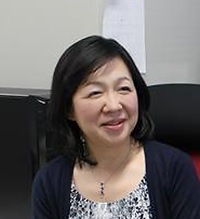News
2018 Saruhashi Prize to be Awarded to Toshiko Terakawa for Her Method to Analyze Earthquake Mechanism Updated in June 2018
On April 16, Association for the Bright Future for Women Scientists (Chairperson: Mizuho Ishida) announced that they will award the 38th Saruhashi Prize* to Nagoya University lecturer Toshiko Terakawa for developing a novel technique to analyze earthquake mechanisms. *Saruhashi Prize was originally established in 1980 to encourage outstanding women scientists under the age of 50.
Dr. Terakawa is from Tokyo. After studying mathematics at Waseda University's Department of Mathematics at its School of Education, she joined a private think tank in 1993. In 2001, she entered the Graduate School of Science at University of Tokyo and completed her doctoral course in 2006. She continued her research at the University of Tokyo and in 2010, moved to the Graduate School of Environmental Studies at Nagoya University and served as a research associate. In 2015, she became a lecturer for Nagoya University’s Earthquake and Volcano Research Center, attached to the Graduate School of Environmental Studies.
She was recognized for her research results on “crustal stress and pore fluid pressure governing seismicity”. By analyzing the slip of faults caused by earthquakes. Dr. Terakawa has developed a new method to rationally estimate the pattern of stress fields that cause earthquakes. It shows that the pressure change is related to smaller earthquakes induced by massive ones. Also, it can logically explain the mechanism of aftershocks which occurred in inland areas after the Great East Japan Earthquake of March 11, 2011.
"The earthquake is a physical process that releases stress stored in the Earth's crust through fault motion," Dr. Terakawa explains in the Earthquake and Volcano Research Center homepage. "In order to understand the mechanism of earthquakes, it is important to know the state of stress and the fracture strength of faults working underground. However, these physical quantities are not well understood yet. Through numerical calculation and data analysis I am trying to estimate the state of stress in the crust and the fault’s strength," she explained.
According to the Association for the Bright Future for Women Scientists, before Dr. Terakawa started to study seismology at the University of Tokyo, there was almost a ten-year gap. Although she faced difficulties at times, she was able to pursue creative research that is not bound by preconceived academic notions. In view of her research results, the association commented that "Her work brought qualitative leap in unravelling the physics of how earthquakes occur and in predicting when earthquakes could occur. We hope that her achievements will contribute in decreasing earthquake-related disasters."








